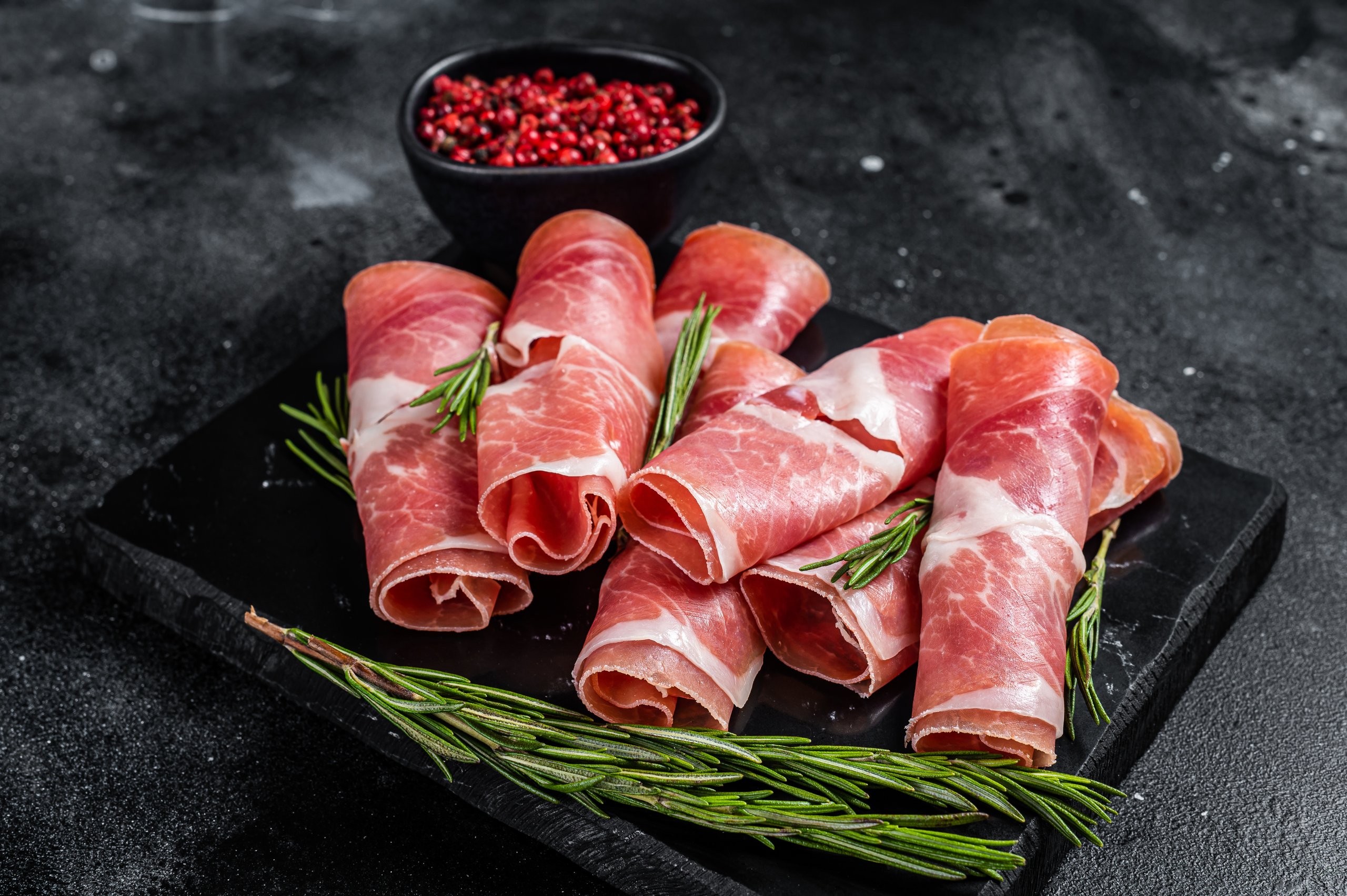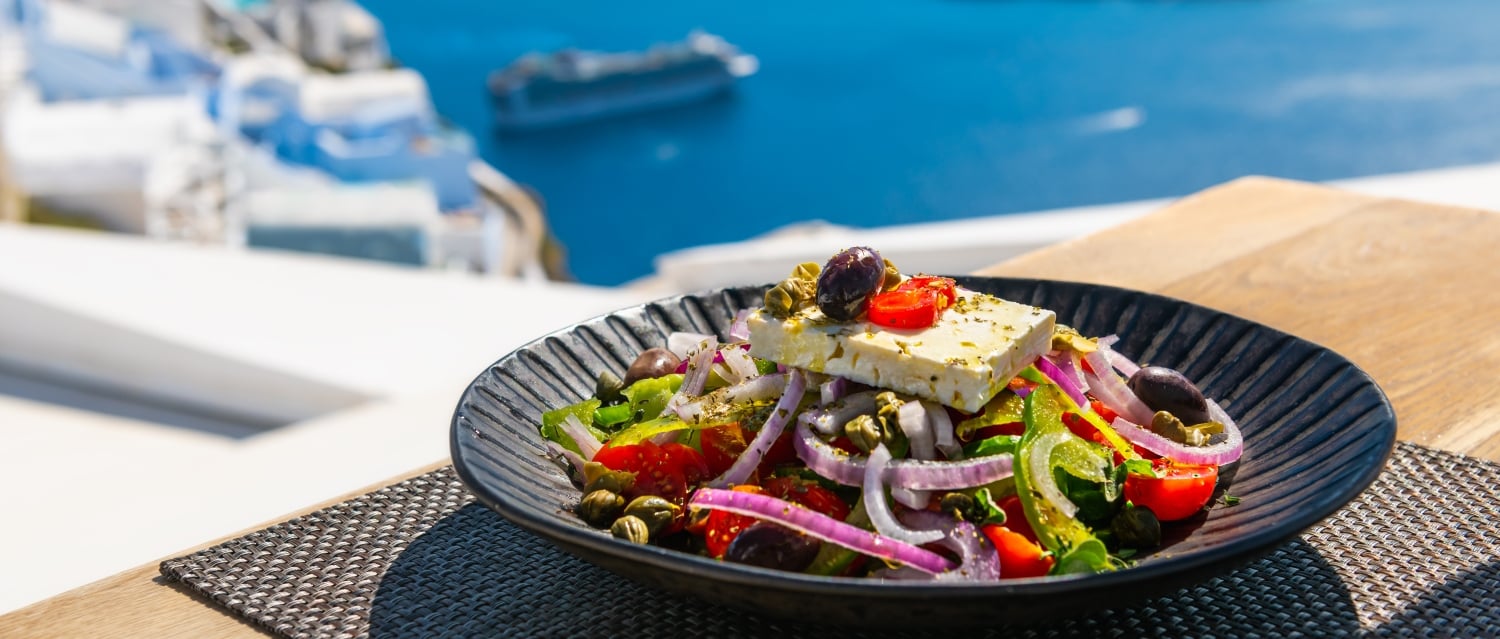There’s no better way to feel at home in Greece than by cooking like a local. Our writer, Julia, shares how neighbourly generosity, market-fresh produce and time-honoured recipes have transformed her kitchen into the heart of her Mediterranean lifestyle. Here’s how you can do the same.
Once you have your own kitchen in Greece, you’ll be able to cook like a local and have friends round for lunch in your herb-scented courtyard. With fresh seasonal vegetables grown locally and some recipes from a Greek neighbour, you’ll soon be dishing up flavoursome Greek meals that turn lunch into a social occasion.
One of the most memorable meals I have had in Greece was when I walked up to the greengrocer’s to find his family laying up a table in front of the shop. I was told it was a special feast day and to go and tell my husband to stop working on the house and for us both to join them for lunch. Four generations of the grocer’s family were there, and “Yiayia” (grandma) made sure we tried everything, including her homemade ouzo – which she poured into half-pint glasses!
The taste of Greece
Greek moussaka is famous around the world and is the go-to dish for many Greeks when they have several hungry mouths to feed, particularly on special occasions. Moussaka is a traditional Greek dish with layers of potato, eggplant (aubergine), zucchini, mincemeat with meat sauce and a bechamel sauce on the top. The warm comforting aroma of Moussaka can be found wafting from homes in the villages as well as taverna kitchens.
Cook Moussaka like a local

The tavernas tend to shallow fry the slices of aubergine and potato, but you can bake them if you prefer a lighter, less oily dish. Twenty minutes in a 180C/350F oven should be enough to slightly brown them. Traditionally Greek moussaka is made with lamb or lamb and beef. But you can use just beef.
To make the meat sauce, the ground meat is sautéed in olive oil, onions and garlic, with thyme, cloves, cinnamon and sugar. Then you add some red wine and simmer with chopped tomatoes until it thickens. It is the herbs and spices that give it that distinctive taste and aroma of Greek cooking. Those used may vary depending on the family recipe and what is available, but its usually thyme, ground clove, cinnamon, parsley and basil.
A traditional Greek moussaka recipe needs a delicious bechamel sauce. However, this is also the hardest part to get right. It’s all about getting a good thickness, whisking constantly, enriching it with eggs and cheese, and not adding too much salt at the end. You can find a recipe for moussaka here.
Regional specialities
Greek cooking isn’t just about moussaka – there many other delicious local recipes, and each region will have its specialities. Pies are quite popular, for example on Crete they make a small, wrapped pie called katsounia. Pies in Greece can be filled with anything from cheese and spinach to herbs and meat. The island of Kefalonia is particularly known for its meat pies. It has a three-meat pie called kefalonitiki kreatopita, which is made with filo, three different meats, Greek cheese and cinnamon and nutmeg.
Meat dishes
While seafood is popular on the coast, in the mountain regions, where there are more cattle and sheep, people cook more meat. The best lamb dish is kleftiko, which is Greek lamb marinated in garlic, olive oil and lemon juice, wrapped in parchment paper and slow-cooked.
To make a really good beef stifada (stew) you should buy large cuts of good quality stewing beef or veal from your local butcher. The secret to a Stifada with a texture that just breaks apart with a fork, is to cook it for a long time on a low temperature and use small, sweet onions.
Legumes
Legumes are another part of the Greek Mediterranean diet, that people often forget to mention. During Greek Orthodox fasting periods, Greeks abstain from meat and dairy. Instead, they turn to dishes using vegetables and legumes. Wednesdays and Fridays are also considered fasting days in the Orthodox Church. Even though not everyone strictly follows this rule, tradition leads them into making stews with chickpeas or lentils on these days. Beans are used to make a delicious soup called fasolada.
Dips
You often see thick dips on a Greek dinner table. As well as tzatziki, you might see a bean or eggplant dip (melitzanosalata). One is the fava (yellow split peas puree) that’s popular on the island of Santorini. Another is a spicy dip made with feta cheese, yoghurt, chili pepper and olive oil (tyrokafteri).
Our neighbours used to make skordalia, pronounced “skor-thal-YAH”. This can be made with a base of potatoes, bread or nuts. We usually use white bread that’s starting to go dry. You slightly wet it to soften it up (but don’t soak it). Add garlic and blend it. Dribble in some red wine vinegar, then a little olive oil, followed by some water. Do it gradually, little by little, until you get a thick smooth paste. Add a pinch of salt to your taste.
Tzakziki
Tzakziki is the most famous Greek dip. It’s so easy to make and can be served with pita bread, chips, vegetables, such as carrots and bell peppers, fish, meat or vegetables on skewers, and of course in the popular gyros.
How to make tzatziki
Traditionally it’s made with strained sheep or goat’s milk yoghurt, but any full-fat Greek yoghurt is fine. To make tzatziki, peel, grate and drain the cucumber, and mix with the full-fat Greek yoghurt, garlic, chopped dill and a drop of olive oil and lemon. Add a little salt and pepper to your taste. Keep in the fridge for at least 30 minutes before eating to allow the flavours to blend. The next day it will taste even better.
Cook like a local
To cook like a local in your region, it’s best to start by seeing what is grown in the area and what’s in season. On Crete and the Dodecanese Islands they make kolokithokeftedes (zucchini balls), while on Santorini they have tomatokeftedes (tomato fritters) using only Santorini tomatoes. Families might even have zucchini, tomatoes and herbs in their garden.
To make the zucchini balls, simply grate the zucchini, remove moisture, mix in some finely chopped onion, mint, dill and basil. Then add lime zest, cumin, chili flakes, eggs and crumbled feta cheese. Then mix, and fold in the flour. Finally, cook the fritters in a frying pan for two to three minutes each side. They are often served with Greek yoghurt that has had honey, cumin, salt and pepper mixed in with it.
Cook desserts like a local
Different areas will have their own variations of desserts. In Central Greece, baklava is made using only almonds; in Pelion it’s made with walnuts; and in northern Greece with pistachio.
There are lots of delectable desserts in Greece, often sweetened with local honey. Greek baklava is one of the most well-known. And it’s quite easy to make, as it’s simply layers of golden-brown filo pastry, chopped walnut and honey.
Another traditional Greek dessert is galaktoboureko, which is made up of layers of golden-brown crispy filo, with melted butter. It’s then filled with a creamy custard and a scented syrup is trickled over the top. You’ll find this and other easy-to-follow Greek recipes on “My Greek Dish”.

From garden to table
Herbs are widely used in Greek cooking, including thyme and oregano. Thankfully, they can be grown in the smallest garden. Plants for use in salads can also be grown quite easily. If you buy a countryside house with some land, you might even have olive trees or fruit trees and space for a small vegetable patch.
Buy fresh and local
Many Greek towns have a weekly market stacked high with fresh fruit and vegetables. The colours are amazing and everything seems so much bigger than at the supermarket. The flavours are certainly superior, when the produce is sun-ripened locally. Look out for farmers’ markets (laiki agora) to get the best quality.
What do Greeks cook at home?
Lunch is traditionally the main meal of the day and usually includes a main dish, a salad and plain bread. Popular dishes are vegetable-based casseroles with cheese, roasted meat, spinach pie (spanakopita), stuffed vine leaves, meatballs in a spicy tomato and wine sauce (soutzoukakia), meat on a skewer (souvlaki), the famous moussaka or grilled octopus (chtapodi sta karvouna). Our neighbour used to tenderise octopus by spinning it in an old washing machine!
Celebration food in Greece
At Easter, many Greek families eat lamb and dye eggs red. But at Christmas they are more likely to cook pork or turkey. There is a special cake eaten at New Year called Vasilopita and at other celebrations they might have honey donuts (loukoumades).
On Crete, a traditional dish served at weddings and celebrations is gamopilafo. Often referred to as “wedding pilaf”, it’s a creamy rice dish cooked in a meat broth, using goat, lamb or chicken. The dish is known for its symbolic meaning of fertility and abundance.
Mezze in Greece
Similar to Spanish tapas, mezze (pronounced me-ZEH-des) is a selection of small dishes served as a light meal that can be shared with family or friends. It makes a meal a sociable occasion, with everyone dipping in, while chatting and drinking ouzo, raki or wine in small glass beakers. Typical dishes might include olives, octopus, saganaki (fried cheese) and dolmades (stuffed vine leaves)
Greek meal etiquette
When you have Greek friends come to your home for a meal, you should be aware of some Greek table etiquette. Your guests will wait for you to tell them where to sit and won’t start eating until you say “kali orexi” (enjoy your meal).
Dishes are placed in the centre of the table and passed to the left. The oldest person is usually served first. It is perfectly acceptable to try food from another person’s plate and mop up sauce with the bread. Like in many European countries, it’s become tradition that you should keep your hands visible above the table and rest them on your wrists when not using your knife and fork.
The meal should be leisurely with plenty of chat, with everyone just taking a little food at a time. You shouldn’t pile your plate up or eat it quickly. If your plate becomes empty, a kindly Greek will probably offer to pass you more. Therefore, if you have eaten enough, it’s a good idea to leave some on your plate or cross your knife and fork. The same applies to ouzo, which should be sipped intermittently with food, keeping your glass half full.
Cooking tips from a local in Greece
- When adding other ingredients to yoghurt, leave it in the fridge overnight to give it time to absorb all that lovely flavour.
- When cooking moussaka, make sure you slice enough aubergine to give you around three layers of coverage. When baked, they will shrink down to the right amount for two layers.
- When making bechamel sauce for your moussaka, constantly whisk while you’re adding the milk. Cooking your béchamel sauce while whisking over a low heat will prevent it from burning and sticking to the bottom of your pan.
- Buy fresh local vegetables and the best cut of meat you can afford.
Your kitchen in Greece
Greek kitchens often have white walls and follow the traditional Greek colour palette of white with blue. If the floor is wood or terracotta tiles, these colours may also be used in the worktops and crockery. Greek architecture also mixes well with sleek modern kitchens, with traditional colours used in the tiled splashback. Ideally you will have an outdoor kitchen as well, to keep the cooking heat out of the house in the summer. A barbecue is usually enough to prepare a skewered meat and salad dinner on a hot evening.
You might also like:









